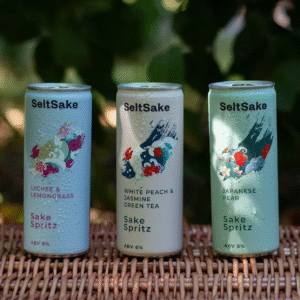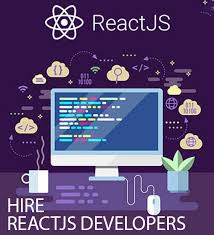Demand Gen vs Lead Gen: The Key Differences Every Marketer Must Know
In B2B marketing, understanding the difference between Demand Generation and Lead Generation is crucial for building a scalable and effective pipeline. While both aim to drive business growth, they operate at different stages of the buyer’s journey and serve unique purposes.
What is Demand Generation?
Demand Generation (TOFU) focuses on creating awareness, trust, and interest among your target audience — your Ideal Customer Profile (ICP). It’s all about positioning your brand as a credible solution before prospects are ready to buy.
According to Salesforce, 81% of buyers research solutions independently before connecting with sales teams. This highlights the importance of being visible early in the buyer journey.
Key Characteristics of Demand Gen:
- Funnel Stage: Top of the Funnel (TOFU)
- Goal: Build awareness and brand trust
- Timeline: Long-term
- Metrics: Website traffic, social engagement, content downloads
- Content Type: Educational, value-driven
- Example: Vereigen Media’s Verified Content Engagement and VM Engage
Demand generation ensures your brand remains top-of-mind, nurturing audiences through awareness and trust-building before the buying phase.
What is Lead Generation?
Lead Generation (MOFU & BOFU) captures the interest of prospects who are ready to take action. It’s a short-term, conversion-focused strategy that transforms engaged prospects into qualified leads.
Key Characteristics of Lead Gen:
- Funnel Stage: Middle & Bottom of the Funnel (MOFU/BOFU)
- Goal: Convert prospects and drive pipeline growth
- Timeline: Short-term
- Metrics: MQLs, SQLs, CPL, conversion rate
- Content Type: Gated or transactional
- Example: Vereigen Media’s Human-Verified Lead Delivery
Lead generation focuses on engaging those who’ve already interacted with your brand and are close to making a purchase decision.
Demand Gen vs Lead Gen — A Quick Comparison
| Aspect | Demand Generation | Lead Generation |
| Funnel Stage | TOFU | MOFU/BOFU |
| Goal | Awareness & trust | Conversion & sales |
| Timeline | Long-term | Short-term |
| Metrics | Traffic, engagement | MQLs, conversions |
| Content | Informative | Action-oriented |
| Example (VM) | Verified Content Engagement | Human-Verified Lead Delivery |
How They Work Together
Rather than choosing one over the other, the key is integration.
- Demand gen educates and warms your audience.
- Lead gen captures and converts those ready to buy.
Together, they help build stronger brand awareness, better-qualified leads, and higher conversion rates.
Vereigen Media’s Full-Funnel Approach
Vereigen Media bridges demand and lead generation with integrated B2B marketing solutions:
- Verified Content Engagement (Syndication) – Ensures your content reaches verified, high-intent prospects.
- VM Engage (Programmatic Ads) – Builds brand visibility among decision-makers.
- Event Registration – Delivers human-verified, high-intent registrants.
- ABM Campaigns – Targets key accounts and buying committees.
By leveraging first-party data and human verification, Vereigen Media guarantees accurate, compliant, and conversion-ready leads — turning awareness into engagement and engagement into measurable growth.
Ready to fuel your full-funnel marketing engine?
Book your free strategy session with Vereigen Media today.
Demand Gen vs Lead Gen: The Key Differences Every Marketer Must Know
In B2B marketing, understanding the difference between Demand Generation and Lead Generation is crucial for building a scalable and effective pipeline. While both aim to drive business growth, they operate at different stages of the buyer’s journey and serve unique purposes.
What is Demand Generation?
Demand Generation (TOFU) focuses on creating awareness, trust, and interest among your target audience — your Ideal Customer Profile (ICP). It’s all about positioning your brand as a credible solution before prospects are ready to buy.
According to Salesforce, 81% of buyers research solutions independently before connecting with sales teams. This highlights the importance of being visible early in the buyer journey.
Key Characteristics of Demand Gen:
- Funnel Stage: Top of the Funnel (TOFU)
- Goal: Build awareness and brand trust
- Timeline: Long-term
- Metrics: Website traffic, social engagement, content downloads
- Content Type: Educational, value-driven
- Example: Vereigen Media’s Verified Content Engagement and VM Engage
Demand generation ensures your brand remains top-of-mind, nurturing audiences through awareness and trust-building before the buying phase.
What is Lead Generation?
Lead Generation (MOFU & BOFU) captures the interest of prospects who are ready to take action. It’s a short-term, conversion-focused strategy that transforms engaged prospects into qualified leads.
Key Characteristics of Lead Gen:
- Funnel Stage: Middle & Bottom of the Funnel (MOFU/BOFU)
- Goal: Convert prospects and drive pipeline growth
- Timeline: Short-term
- Metrics: MQLs, SQLs, CPL, conversion rate
- Content Type: Gated or transactional
- Example: Vereigen Media’s Human-Verified Lead Delivery
Lead generation focuses on engaging those who’ve already interacted with your brand and are close to making a purchase decision.
Demand Gen vs Lead Gen — A Quick Comparison
| Aspect | Demand Generation | Lead Generation |
| Funnel Stage | TOFU | MOFU/BOFU |
| Goal | Awareness & trust | Conversion & sales |
| Timeline | Long-term | Short-term |
| Metrics | Traffic, engagement | MQLs, conversions |
| Content | Informative | Action-oriented |
| Example (VM) | Verified Content Engagement | Human-Verified Lead Delivery |
How They Work Together
Rather than choosing one over the other, the key is integration.
- Demand gen educates and warms your audience.
- Lead gen captures and converts those ready to buy.
Together, they help build stronger brand awareness, better-qualified leads, and higher conversion rates.
Vereigen Media’s Full-Funnel Approach
Vereigen Media bridges demand and lead generation with integrated B2B marketing solutions:
- Verified Content Engagement (Syndication) – Ensures your content reaches verified, high-intent prospects.
- VM Engage (Programmatic Ads) – Builds brand visibility among decision-makers.
- Event Registration – Delivers human-verified, high-intent registrants.
- ABM Campaigns – Targets key accounts and buying committees.
By leveraging first-party data and human verification, Vereigen Media guarantees accurate, compliant, and conversion-ready leads — turning awareness into engagement and engagement into measurable growth.
Ready to fuel your full-funnel marketing engine?
Book your free strategy session with Vereigen Media today.

